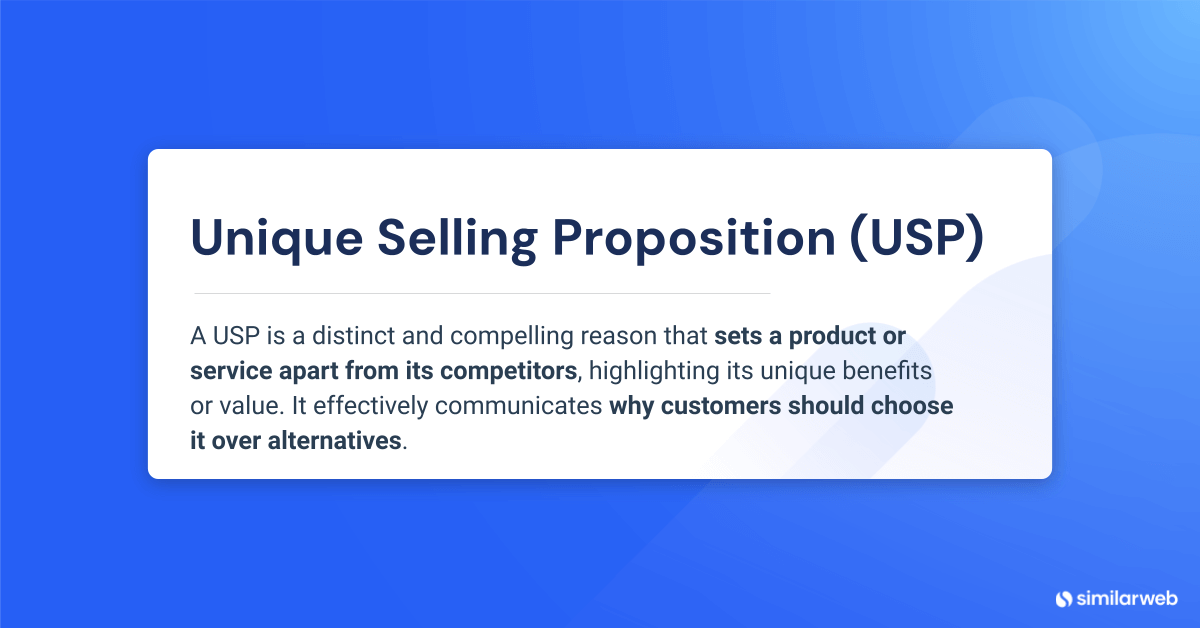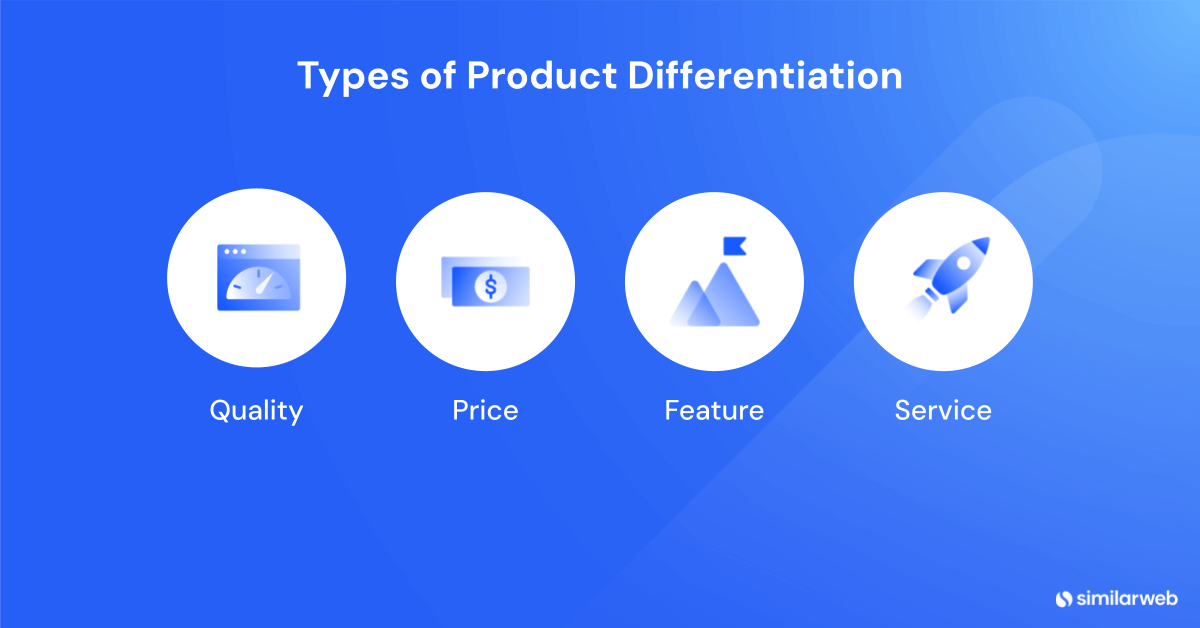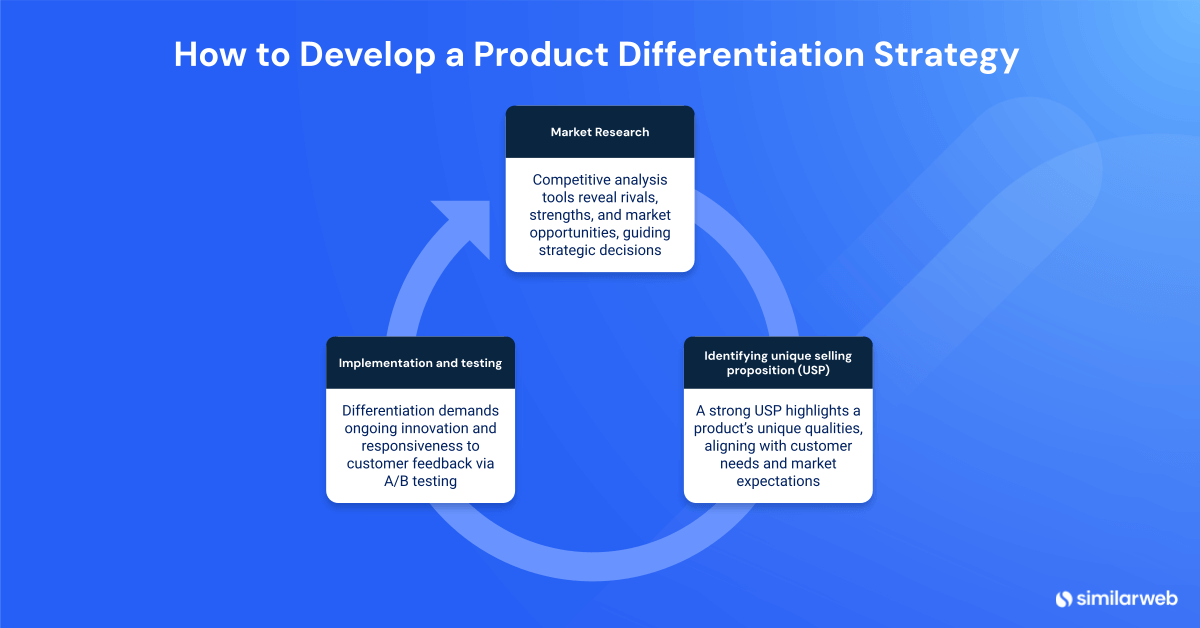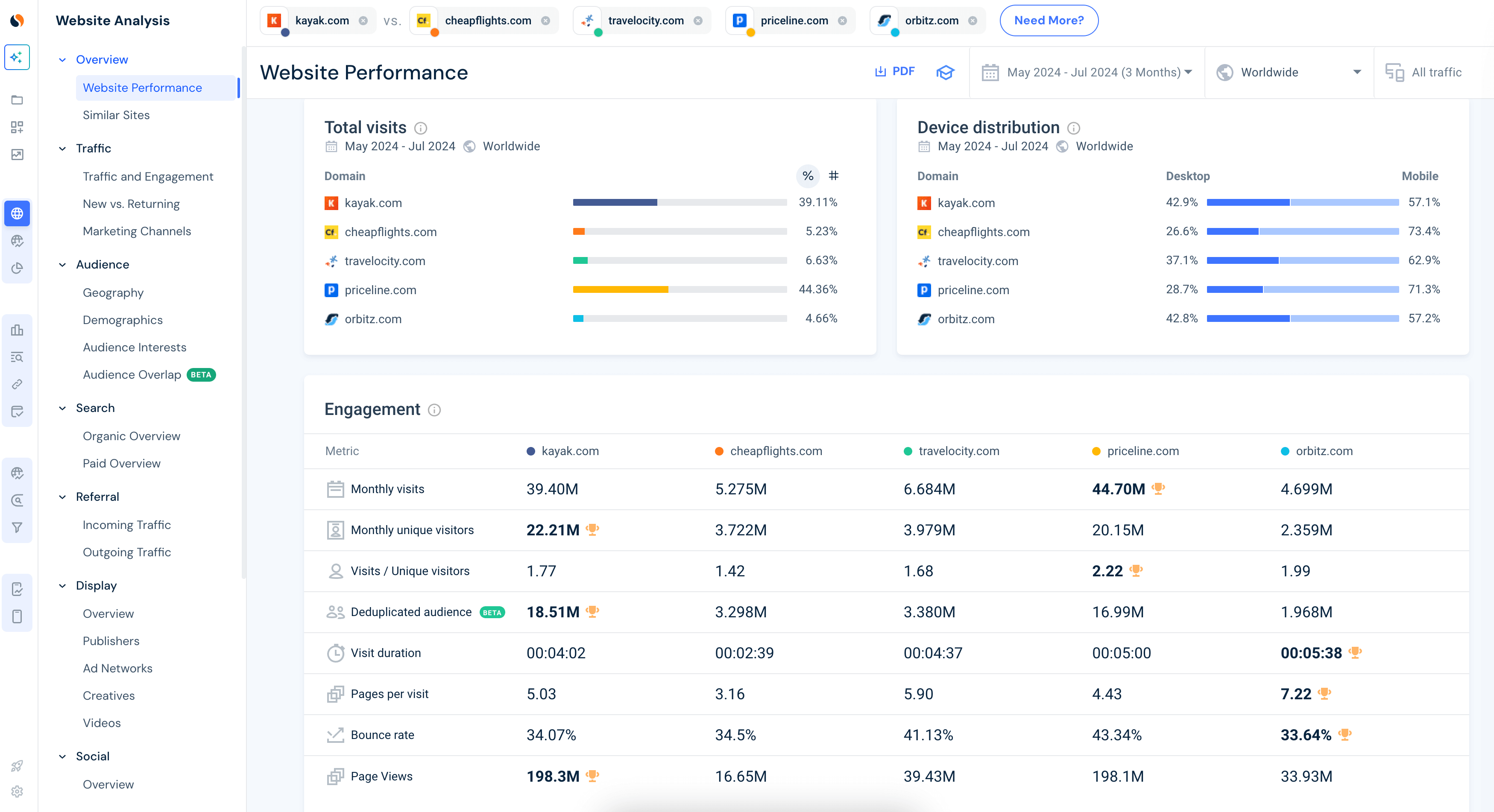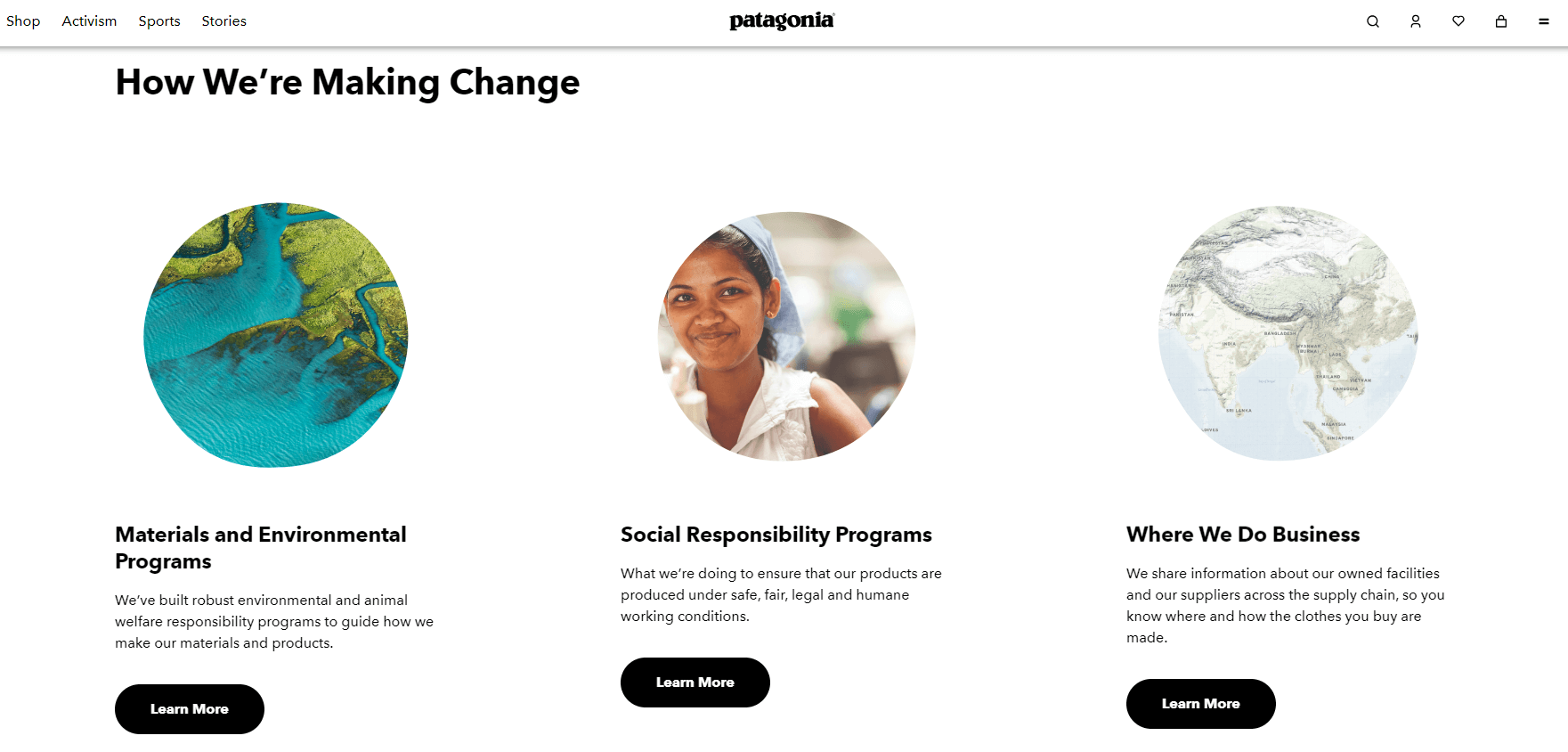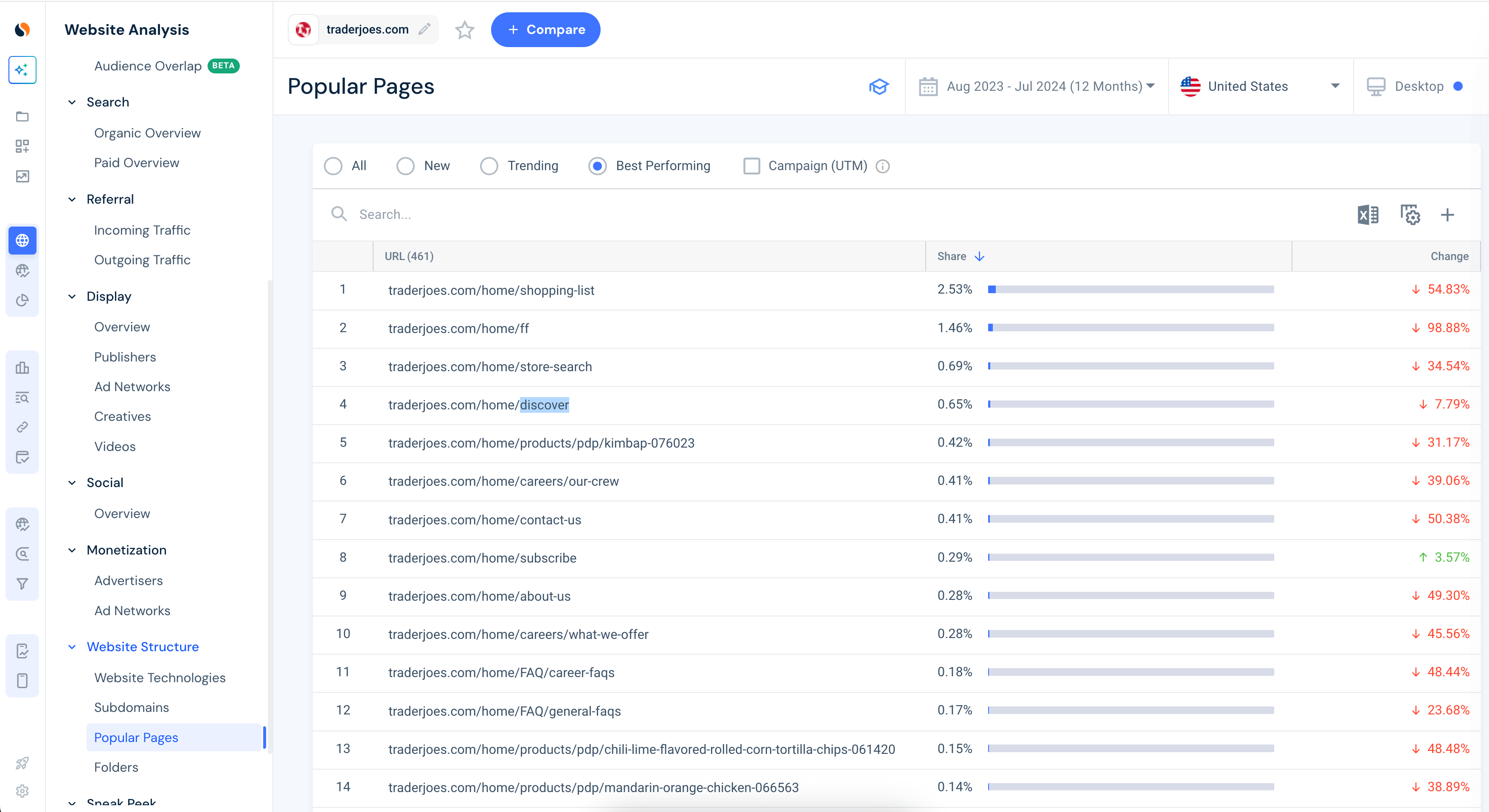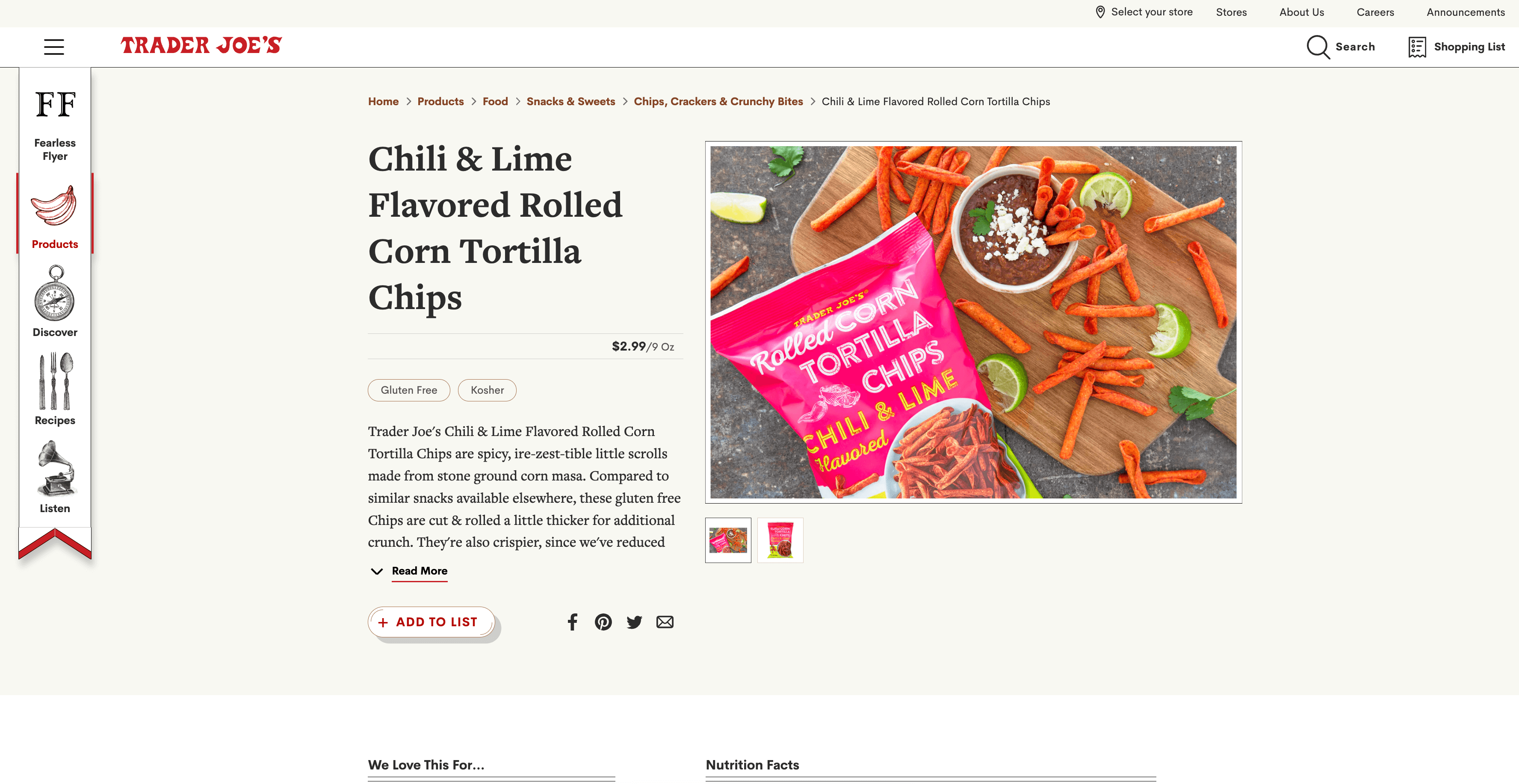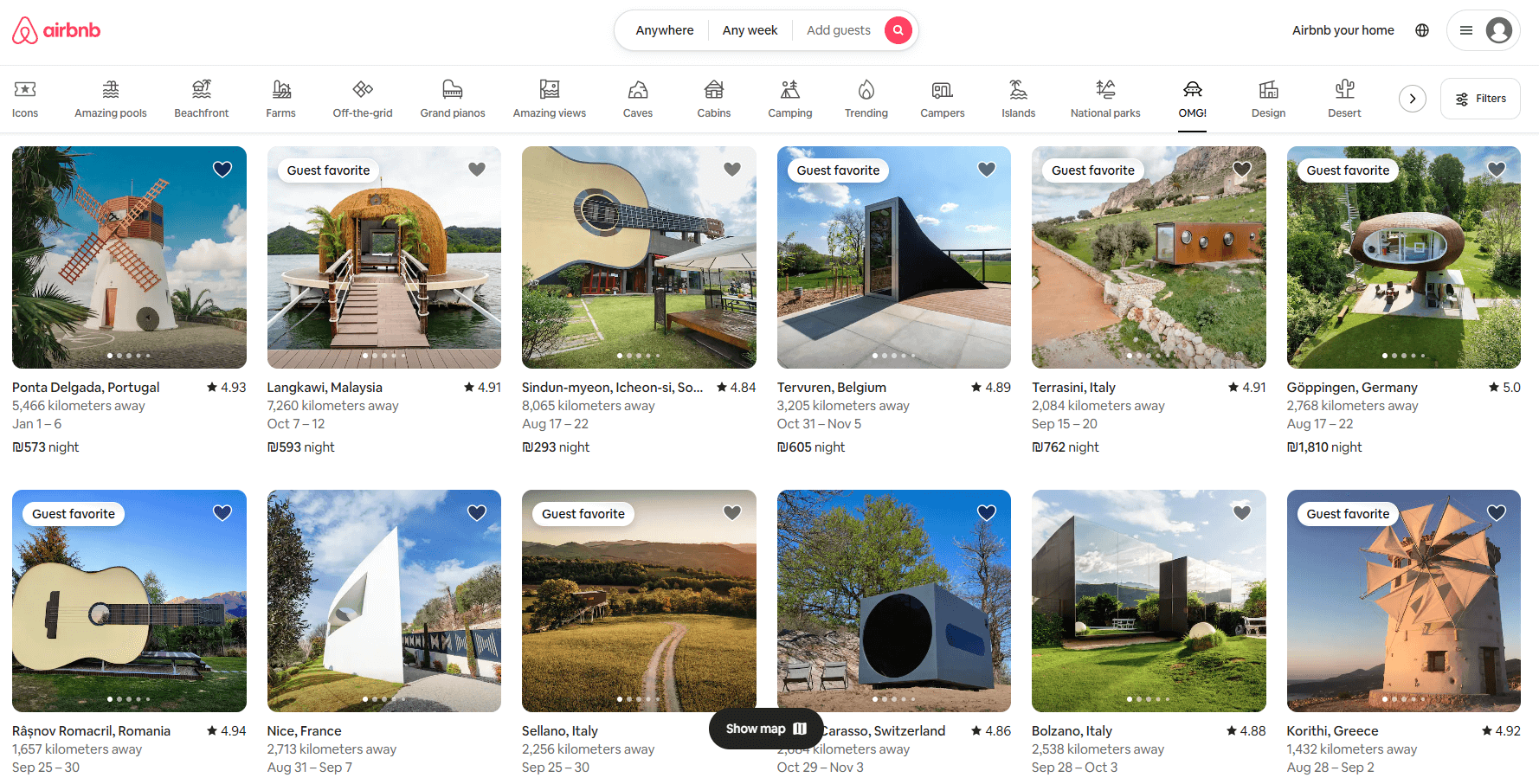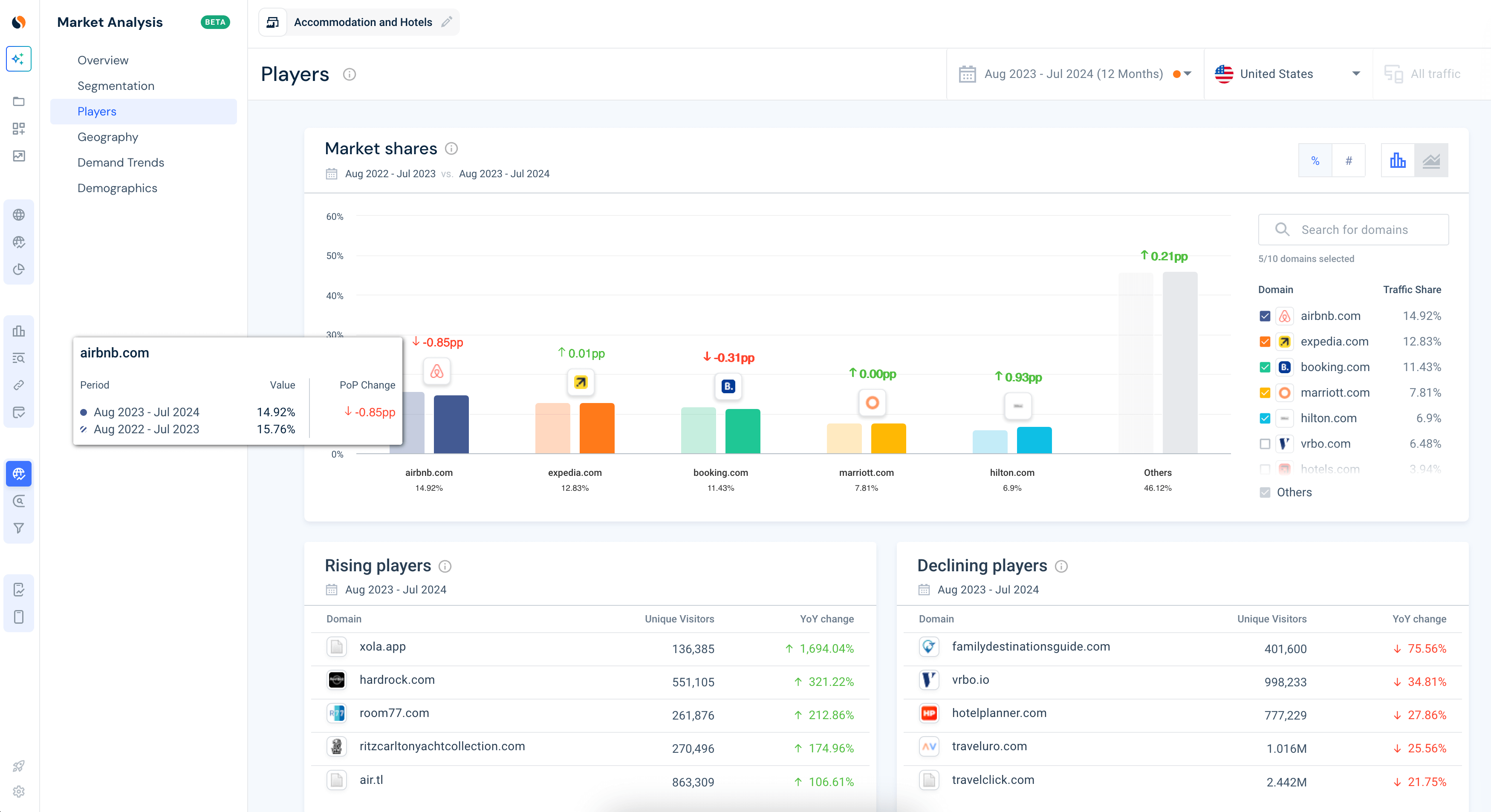What Is Product Differentiation: Types, Benefits, and Examples
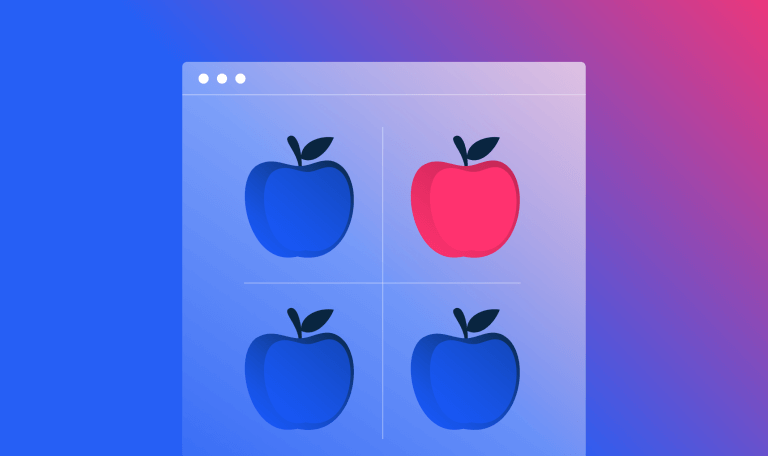
Product differentiation is a marketing strategy that emphasizes the uniqueness of a product, making it stand out from other similar products available in the market. This is especially an important strategy in competitive markets where consumers have a myriad of options. A well-etched identity assumes importance in highly competitive markets where every little bit helps woo customers towards one’s products over others.
The numbers around product differentiation are simply compelling. Increased audience loyalty is told off by higher percentages of unique visitors, and 59% of shoppers prefer buying new products from brands they are familiar with, according to Invesp. This simply underlines the need for creating unique customer experiences. Another statistic from First Insight says 51% of consumers are driven by quality versus price, which provides further proof of the clarity of value proposition presentation.
These numbers drive home real value that consumers place in unique attributes, superior quality, and strong identity.
What is product differentiation?
Product differentiation marks a product as different by advertising its uniqueness in features, benefits, and attributes. This helps businesses to have a unique identity in a crowded market as their products become more attractive to customers. Differentiation goes beyond mere superficiality; it means unique selling propositions (USPs) that consumers find worthy and effective. Successful differentiation ensures that products are not deemed commodities. This keeps price wars at bay and helps companies maintain healthier margins.
Effective differentiation will give perceived value to your customers, allow for higher pricing, improve customer loyalty, and provide a clear brand identity. Based on this uniqueness, something that competitors cannot easily match, one could very well build a truly unique and sustainable competitive advantage. It forms the capability to drive brand loyalty and market share, underlining the criticality of differentiation in a successful marketing strategy. This approach is very important in creating a lasting impression on the minds of consumers and in achieving a competitive advantage.
Types of product differentiation
Different product differentiation strategies appeal to various customer preferences or needs. The following are a few ways to differentiate and make products attractive:
Quality differentiation
Quality has broad appeal to customers who are seeking companies that provide superior raw materials, advanced technology, and cautious craftsmanship. If a product is highly durable, performs well, and is of good quality, the pricing can be reasonably increased and customers remain loyal to the brand. Examples include luxury cars and high-end electronics that differentiate on tangible benefits to justify their premium price.
Quality differentiation also includes the experience of quality service, where customers are treated in a manner that reflects high product quality. This approach is also going to foster trust and repeat business—a clear first step toward brand loyalty.
Besides the tangible aspects, customers may perceive quality through brand reputation and customer testimonials. A brand’s reputation concerning quality greatly flows from consistent product performance and reliability, thereby making it tough for any competitors to attract loyal customers. More often than not, high-quality products lead to positive word-of-mouth, thus strengthening a brand further in the market.
Price differentiation
One of the prominent tools for differentiation is the pricing strategies. A brand can charge a premium to exude class or turn out to be a cost competitor by delivering good quality products at low prices. IKEA is a sterling example of this approach, through its trendily designed furniture, yet available at lower prices. This dual approach helps businesses target both the luxury and budget segments and maximize their market reach.
Proper price differentiation is called for by an analysis of the market to understand consumer spending behavior and how to orient pricing strategies toward attracting different segments. Dynamic pricing, discounts, and promotional offers are the drivers of sales and market share.
Tiered pricing models may also use price differentiation, wherein basic and premium versions of the same product appeal to a greater pool of customers. Knowing the elasticity of demand is very instrumental in developing an efficient pricing strategy. Such knowledge can yield optimal pricing to maximize revenues yet remain attractive to the price-sensitive customer. Promotions and limited-time offers can be a tactical element of a larger strategy to invite customers and create urgency.
Feature differentiation
The more value-added and the more unique features a product has, the more appealing it will be. Oftentimes, advances in technology pave the way for feature differentiation. High-end cameras or advanced health-tracking features in a smartphone are unique because they meet and sometimes even anticipate customer needs.
That is why innovative processes and serious investment in research and development are very important in finding and integrating features that bring real value to customers. This will help companies stay at the forefront of any technological trends and remain competitive with their products being relevant and desirable.
Feature differentiation lives in the identification and solution of certain pain points within a target audience. Regular user feedback sessions and surveys could give insights into consumer preferences and potential innovation areas. This feedback loop will ensure that new features created are relevant to market demand and improve the overall user experience.
Service differentiation
Good customer service is another major differentiator. It is personalized service, quick solutions to their queries, and full support that brings customers back to repeat business. Companies like Zappos have a very strong base of excellent customer service that can always bring back customers. A solid service difference strategy starts by first understanding customer pain points and addressing them even before they happen. This differentiation, extended in after-sales support, warranty offerings, and experience personalization, enhances customer satisfaction and long-term loyalty to a great extent and helps bring in better overall value for the product.
Service differentiation also includes developing a good relationship with the customer through engaging and supporting them regularly. Customer relationship management (CRM) tools can make service interactions much easier, as this will allow customers to feel that they are important and always listened to.
Offering easy and clear return policies, on-time updates, and constant communication with clients can significantly raise the bar of customer experience and nurture an emotional connection with the brand.
Key benefits of product differentiation
There are several product differentiation advantages, all of which are linked to success in business in the long run. Understanding these benefits is important to develop better strategies.
Competitive advantage
Differentiation helps businesses become leaders in the market. It is through unique features, superior quality, and extraordinary service that a brand becomes different, enhancing its market position. This kind of strategy creates a unique value proposition targeting certain segments, bringing more conversions and strengthening brand identity. Metrics such as audience loyalty and market share demonstrate how differentiation leads to market leadership by showing the actual links between the strategies and market growth.
Other characteristics that make a brand truly competitive include unique brand stories and values that read between the lines of familiarity with consumers. Those brands that clearly and concisely state some compelling mission find it generally much easier to attract and hold on to customers with matching values. This value alignment maximizes the emotional connection with the target audience and further cements a brand’s place in the market.
Customer loyalty
Unique value conveyed to customers through differentiated products makes building a loyal customer base easier. Distinct features and services that are more personalized can drive brand loyalty, resulting in a greater percentage of returning users. Audience loyalty metrics show the volume of unique visitors, reflecting stronger brand affinities.
High audience loyalty translates into smooth and continuous streams of revenue with lower marketing costs and enhanced brand equity. Metrics for new versus returning users are on a deeper level of giving meaning to customer behavior, where high rates of returning users might very well indicate successful differentiation and, hence, strong brand preference.
Brand loyalists generally become promoters who freely share their experiences with others and recommend the products. This organic word-of-mouth is very valuable since it not only builds credibility but also broadens the base of customers at relatively low marketing costs. Loyalty programs, rewards, and personalized offers can further enhance customer retention, setting into motion a virtuous cycle for engagement and growth.
Increased profitability
Differentiation has a positive effect on the increase in revenue streams by the ability to charge premium prices for differentiated and unique offerings. A compelling value proposition can draw customers who are ready to pay a premium to enjoy extra advantages, thus making a better profit margin. Less price competition, in the case of differentiated products, reduces the need for expensive promotional activities. Business profitability of this sort can support reinvestment in innovation and marketing, thereby ensuring a competitive edge for further growth. Accumulated efforts at differentiation, based on data-driven decisions and backed by market insights, underpin the continuous appeal and profitability of products.
Revenue growth from differentiated products generates the proper flow of funds that will help the company venture into new markets and expand its product lines. Innovation and constant fine-tuning of the products keep companies profitable and competitive; continuous innovation puts companies on a profitable platform. Strategic reinvestment done in this way creates a culture of innovation, hence making the brand one of the market leaders.
Developing a product differentiation strategy
An effective differentiation strategy calls for an in-depth understanding of the market to focus on exploiting those unique product attributes:
1. Market research
Competitive analysis tools, such as the Similarweb platform, are critically instrumental in discovering who the competitors are, their strong and weak areas, and latent opportunities lying in the market. Analyzing website traffic and trends aids in the analysis of traffic shares and trends for better strategic decisions. Competitive benchmarking helps the brand understand where it is positioned vis-à-vis its competitors, what gap exists, and where improvements can be made. Through constant market research, a business can remain agile and responsive to the changing structure of consumer tastes and dynamics to cope with emerging trends and opportunities. Such a proactive approach is critical in developing differentiation strategies that would resonate with target audiences and increase brand strength.
Thorough market research can help to gain insights into the competitive landscape and determine what threats and opportunities may be forthcoming. Valuable insights into the dynamics of the market, customer preferences, and emerging trends can be easily understood with the use of relevant competitor analysis tools. It guides strategic planning by taking a data-driven approach and helps a business to stay ahead of the competition.
2. Identifying Unique Selling Proposition (USP)
What is there in the product that makes it different? This is a vital aspect of differentiation. This may be any innovation, better quality, or very good customer service, for example. A clearly outlined and properly communicated USP helps put a product in a better light in a market. An effective USP speaks the language of the target audience in addressing their unique needs, wants, or problems.
Working in collaboration with stakeholders such as customers, employees, and experts in the industry brings various valuable insights into new USPs. This constitutes an inclusive approach to the differentiation strategy, making it well-rounded, impactful, and in line with market expectations.
An effective USP requires insight into the brand’s essential qualities, values, and characteristics. It is all about determining what makes it special and why customers should buy this product instead of another. Conducting a SWOT analysis (Strengths, Weaknesses, Opportunities, and Threats) will enable a brand to identify exactly what makes the product unique and at an advantage over others. This approach will ensure that the USP is not just different but gets to bring out the real value of the product.
3. Implementation and testing results
Execution and continuous improvement need to be done to keep up the differentiation. Businesses must regularly test new features and garner customer feedback to modify their product based on market reaction. This iterative process keeps the products relevant and very alluring. Data-driven methods, such as A/B testing, customer surveys, and usability testing, allow getting actionable insights that act as guides while making development efforts. It should focus on the improvement process, evolving the product with customer expectations in line, to help in sustaining the lead.
Differentiation needs continuous innovation and agility. A business has to be responsive to customer feedback and industry trends by continuously refining products to adapt to changing demands. In implementing these changes from real-world feedback, differentiations will stay relevant and effective.
Product differentiation examples
The successful differentiation of products can be viewed across various industry sectors. These examples showcase the unique approaches to stand out in the market:
Retail and fashion industry
One major factor that sets Patagonia apart is its serious commitment to environmental sustainability. This brand uses recycled materials and has a well-defined stance on ethical manufacturing, which resonates strongly with eco-conscious consumers. This approach doesn’t just appeal to a small niche; it reinforces Patagonia’s market positioning. The move by Patagonia demonstrates that differentiation in values and principles can be as powerful as product differentiation. As consumers increasingly seek out idealistic brands, Patagonia has capitalized on this trend to build strong brand loyalty.
For patagonia.com, sustainability extends beyond the product line to the very essence of the business itself. This is a significant selling point in the growing sector of environmentally aware consumers. Patagonia’s ability to align brand and consumer values so effectively serves as a powerful example of how this alignment leads to strong brand loyalty and market differentiation.
As seen below, looking at the last three months in the US market, it’s clear that organic search traffic and the percentage of organic versus paid traffic are higher than those of its main competitors, suggesting that this strategy is paying off.
FMCG industry
Trader Joe’s takes a unique approach to grocery retail by offering quirky, privately branded products with high-quality ingredients. This strategy has cultivated a loyal customer base that chooses Trader Joe’s over typical grocery stores. From its distinctive product selection to its engaging in-store experience, Trader Joe’s provides two compelling reasons for customers to return. This success underscores the importance of branding and customer experience in product differentiation, demonstrating how a unique shopping environment can drive loyalty.
What sets Trader Joe’s apart in the crowded grocery market is its exclusive products and distinct store experiences, which have fostered strong brand loyalty. This example highlights the power of combining product differentiation with exceptional customer experience.
In July 2024, among Trader Joe’s most popular pages, the ‘Discover’ and ‘Store Search’ pages ranked among the top 10, attracting the most monthly traffic.
An example of its niche offerings can be seen in the 13th most popular page, featuring the Chile & Lime Flavored Rolled Corn Tortilla Chips, which received 0.15% of all website traffic, indicating that consumers are actively seeking out and arriving at Trader Joe’s unique products.
Travel industry
Airbnb disrupted the travel industry by offering quirky, local accommodations vastly different from traditional hotels. It allows tourists to experience unique, authentic environments around the world, catering to the growing demand for exclusive, local experiences. Airbnb’s success demonstrates how a company can gain significant market share and change consumer expectations by redefining an industry with an innovative offering. This example underscores the potential for bold differentiation strategies to transform entire markets.
Airbnb’s marketplace-based business model encourages travelers to explore accommodation choices that reflect local cultures and lifestyles. Additionally, it offers a wide range of lodging options to suit various tastes and budgets. This approach has not only increased Airbnb’s market share but also shifted consumer expectations across the travel industry.
Founded in 2007, Airbnb has evolved from disrupting to leading the hotel and accommodations industry globally, and in particular within the US market. Despite a slight year-over-year (YoY) market share decline in 2024 (from 15.7% to 14.9%), Airbnb remains larger than Expedia and Booking.com, the other behemoths in the space, and holds more market share than the two biggest hotel chains combined: Marriott (7.8%) and Hilton (6.9%).
Final Thoughts: Transforming your product from idea to value
Product differentiation is a powerful tool for standing out in a crowded market. Whether through unique features, superior quality, or exceptional service, businesses can capture and retain consumer attention, leading to sustainable growth.
Companies that excel in product differentiation build brand loyalty, command premium prices, and achieve long-term success. Mastering these strategies can elevate your brand from mediocre to memorable. Apply them today for a stronger brand and increased profitability.
Unlock actionable insights with Similarweb:
- Understand your competitive landscape and identify key players in your market
- Track and analyze any website or app to boost your product sales
- Uncover competitors’ winning marketing strategies and top-performing products
FAQs
What are the steps to create a unique selling proposition (USP)?
Developing a USP includes understanding the market, identifying the uniqueness of your product, and above all, communicating that to the audience. First of all, an in-depth study of the market should be conducted to find gaps and opportunities. Secondly, identify precisely what makes your product stand out and serve the customer’s needs differently. Get relevant stakeholders involved in fine-tuning and validating the USP so it aligns with expectations in the marketplace. Then, go ahead to develop a clear, compelling message that brings your USP to life for the targeted audience.
How will companies be able to measure whether their differentiation strategy has been successful?
Companies could track their market share, customer loyalty, and profit margins as key performance indicators (KPIs) to check on the effectiveness of the differentiation strategy. Tools like Similarweb are very important in competitive performance analysis of market trends. This would be a pointer toward the effectiveness of the differentiation strategy in the eyes of the target audience. Finally, regular customer feedback through customer surveys may help bring to the limelight some important information about customer satisfaction and preference to highlight the areas of improvement.
Can differentiation be sustained in the long term?
Yes, provided continuous innovation and adaptation exist, differentiation can be sustained in the long run. Companies should keep constant watch over what their competitors are doing, how the market is trending, and what the customers’ feedback is to fine-tune their efforts in differentiating themselves. This critical investment in R&D, identification of new emerging technologies, building brand strength through positioning, continuous upgrading, and improvement of product features, and raising quality levels and customer service will keep the competitive edge and lead the company toward long-term success.
How important is brand identity in product differentiation?
Brand identity goes the extra mile in product differentiation, creating a likable and memorable image that the consumer opts to keep in mind. Good brand identity is expressed through visuals, messaging, values, and customer experience, which are the sum of elements that distill the product, among others. Enterprises with distinguished and recognizable brand identities create trust and loyalty among their customers.
Is there any risk associated with product differentiation?
While there are many advantages of product differentiation, the strategy also carries some risks: one is that overemphasizing some features or aspects can increase the costs, possibly not being matched by higher revenues. In addition, the efforts at differentiation might alienate the parts of the market that are less interested in the special features that are being pushed. To avoid this, companies should research markets adequately, balance differentiation with cost management, and have the flexibility to change strategies based on market feedback and performance data.
Sources
Your full marketing toolkit for a winning strategy
The ultimate solution to help you build the best digital strategy
